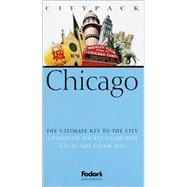
| Contents Life Introducing Chicago Chicago in Figures A Chronology People | |
| Events from History | |
| How to Organize Your Time Itineraries Walks Evenings Out Organized Sightseeing Excursions | |
| What's On Top 25 Sights | |
| Frank Lloyd Wright Home | |
| Studio Polish Museum of America Jane Addams Hull-House | |
| Museum Graceland Cemetery Wrigley Field Lincoln Park Sears Tower Chicago Board of Trade | |
| The Rookery Chicaco Historical Society Carson Pirie Scott | |
| Co. Store Wrigley Building Terra Museum of American Art Chicago Cultural Center | |
| International Museum of Surgical Sciences | |
| Tribune Tower Art Institute of Chicago Grant Park Field Museum of Natural History | |
| Glessner House Museum John G. Shedd Aquarium Du Sable Museum of African-American History Adler Planetarium | |
| Astronomy Museum Oriental Institute Museum of Science | |
| Industry Best Neighborhoods Mus eums Historic Buildings Modern Buildings Places of Worship Parks, Gardens, | |
| Beaches Views Attractions for Children Free Attractions | |
| Where to... EatContemporary American Steaks, Ribs | |
| Chops Quick Bites | |
| Tapas German | |
| East European French | |
| Italian Asian | |
| IndianShopMalls | |
| Department Stores Clothes Accessories | |
| Vintage Clothes Arts, Antiques, | |
| Collectibles Books Discount, Catalogue, | |
| Factory Stores MiscellaneousBe EntertainedBlues | |
| Jazz Spots Comedy, Folk, Rock, | |
| Reggae Spots Classical Music, Theater, | |
| the Performing Arts Nightclubs BarsStay | |
| Luxury Hotels Mid-Price Hotels Budget Accommodations Travel Facts Planning Your Trip Arriving | |
| Departing Essential Facts Public Transportation Driving Media | |
| Communications Emergencies Credits | |
| Acknowledgments, and Titles in this Series | |
| Index | |
| Table of Contents provided by Publisher. All Rights Reserved. |
The New copy of this book will include any supplemental materials advertised. Please check the title of the book to determine if it should include any access cards, study guides, lab manuals, CDs, etc.
The Used, Rental and eBook copies of this book are not guaranteed to include any supplemental materials. Typically, only the book itself is included. This is true even if the title states it includes any access cards, study guides, lab manuals, CDs, etc.
Excerpted from Chicago by Fodor's Travel Publications, Inc. Staff
All rights reserved by the original copyright owners. Excerpts are provided for display purposes only and may not be reproduced, reprinted or distributed without the written permission of the publisher.